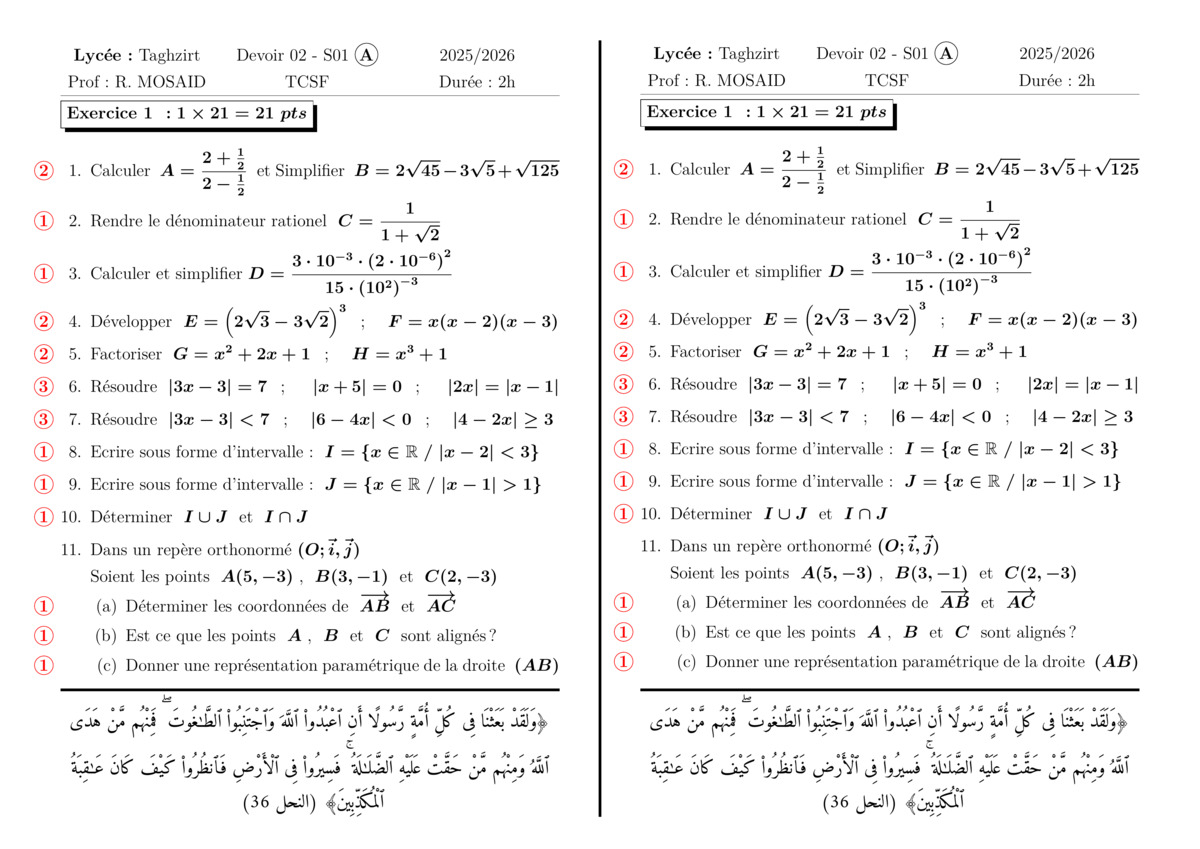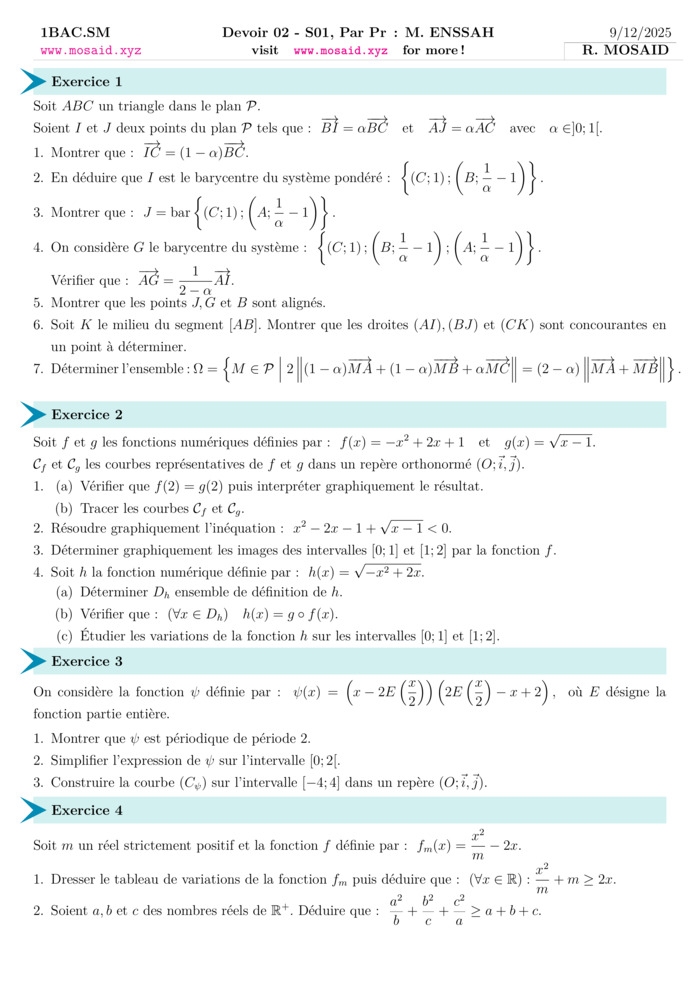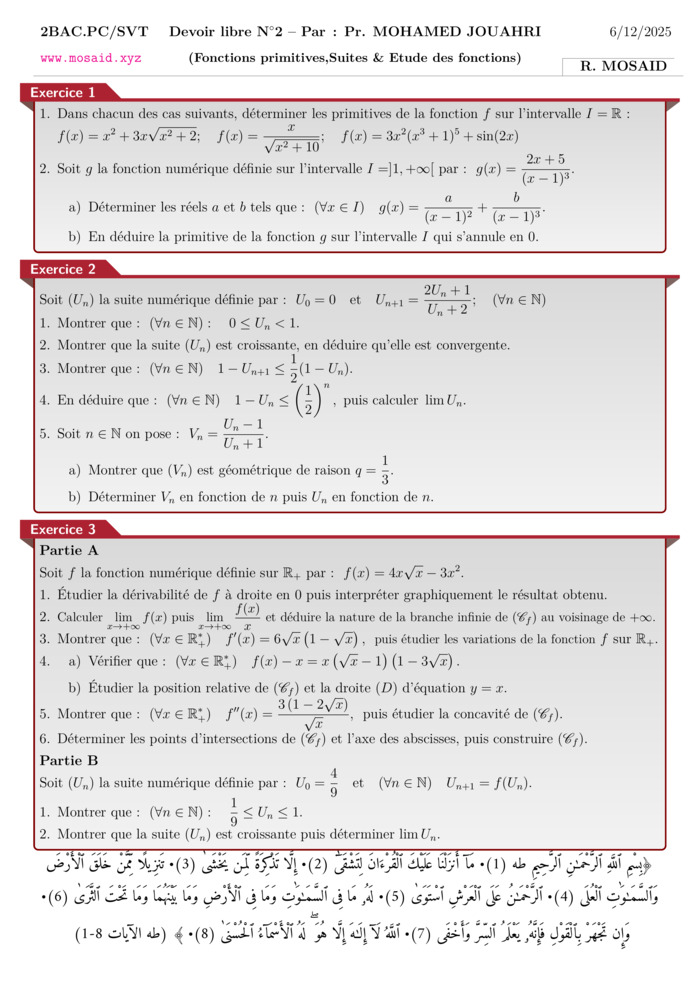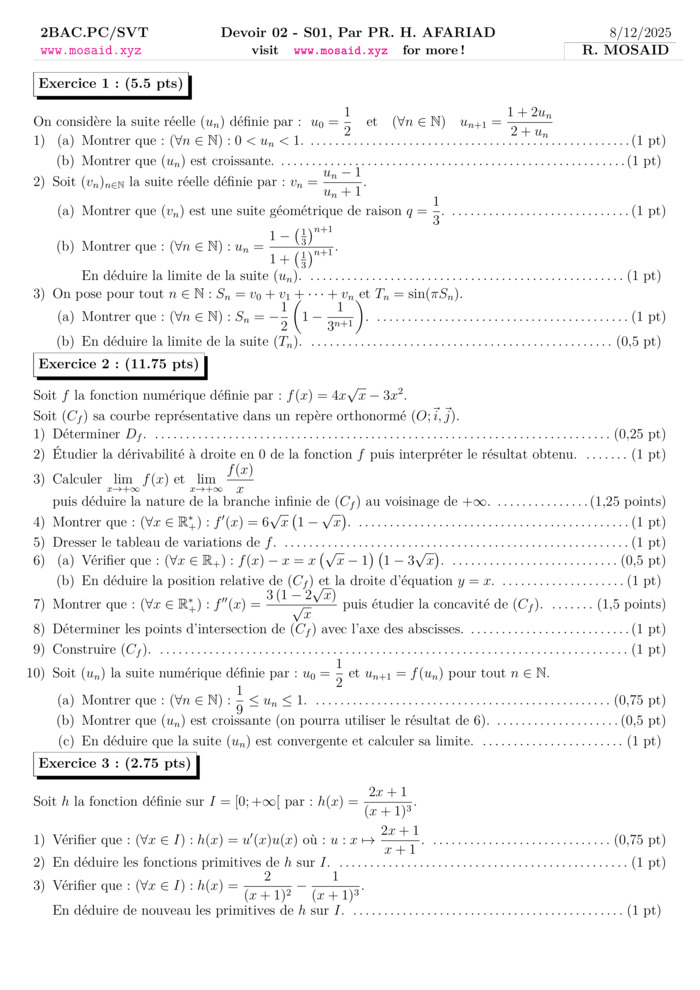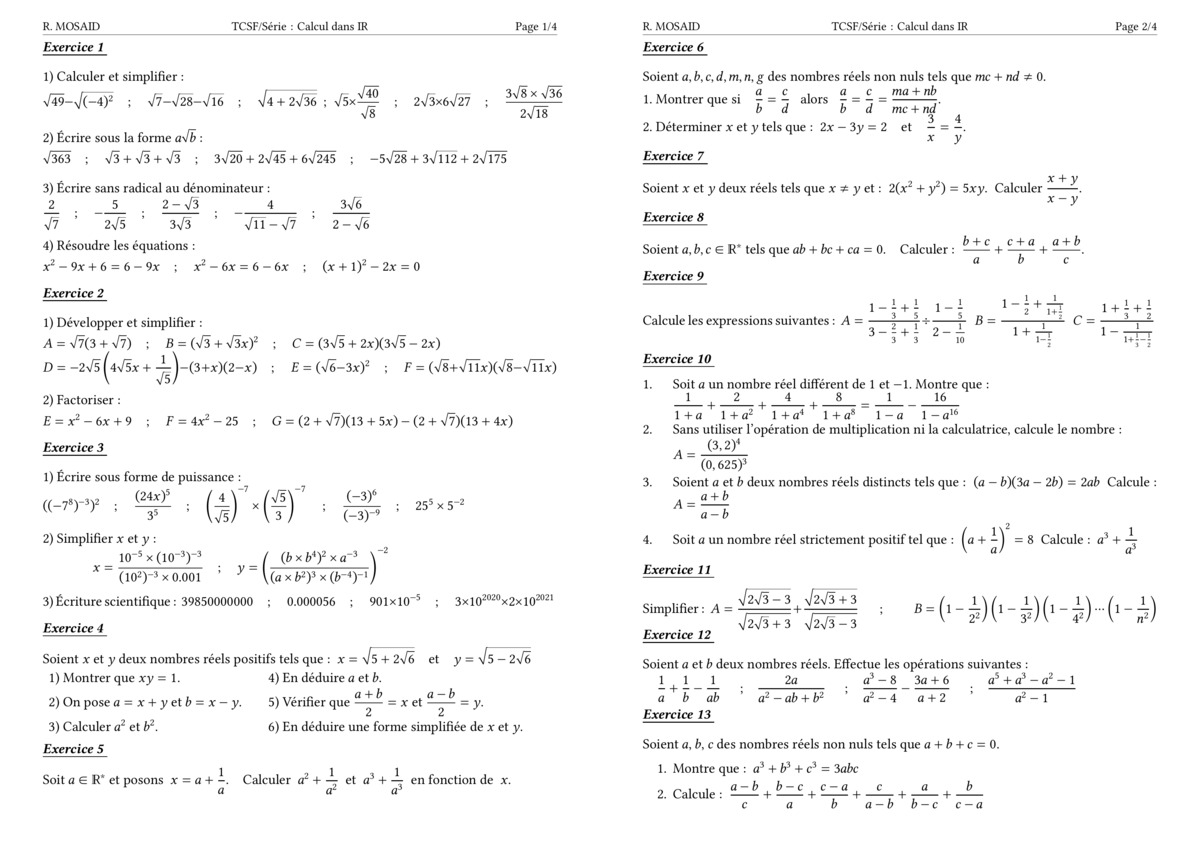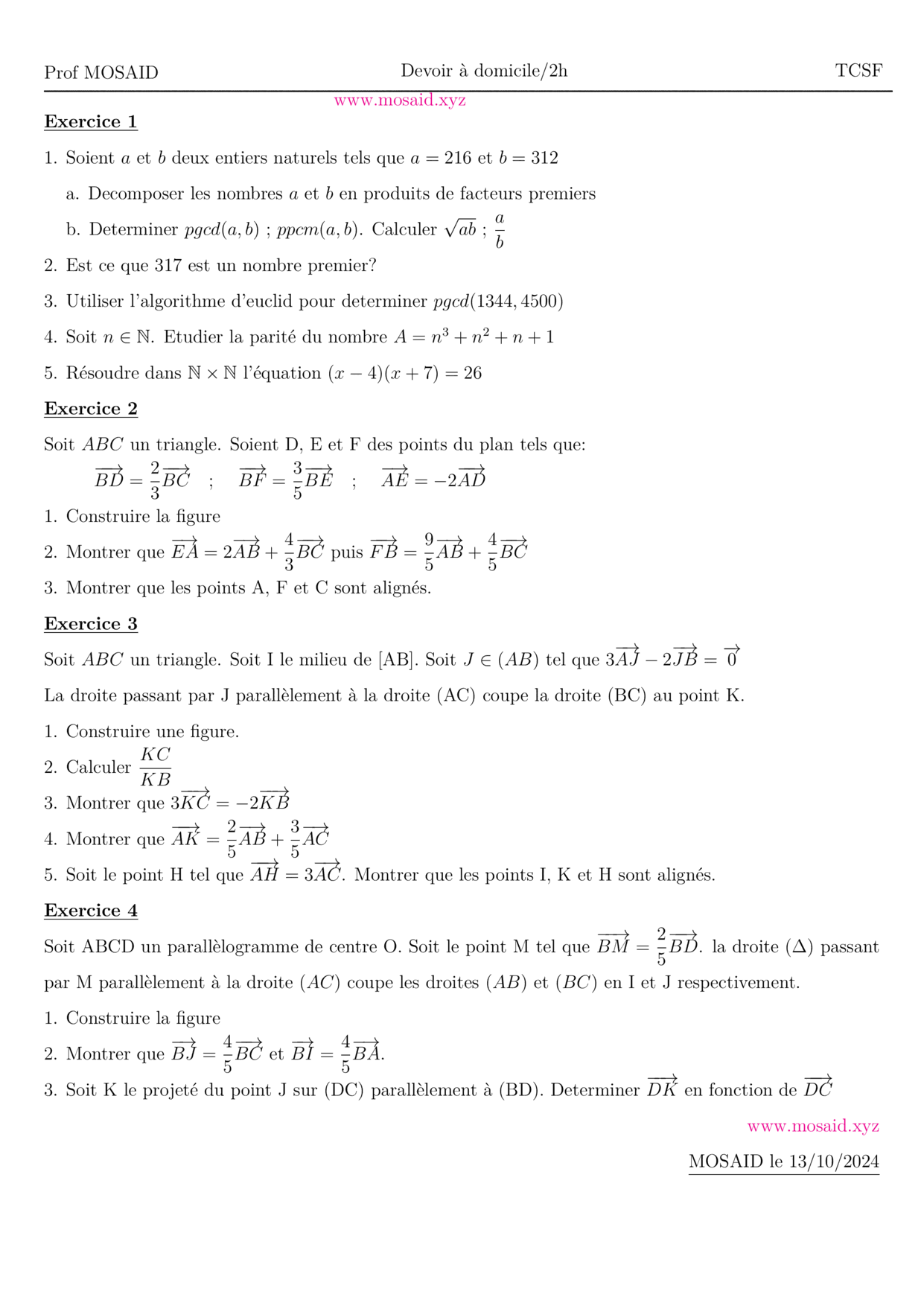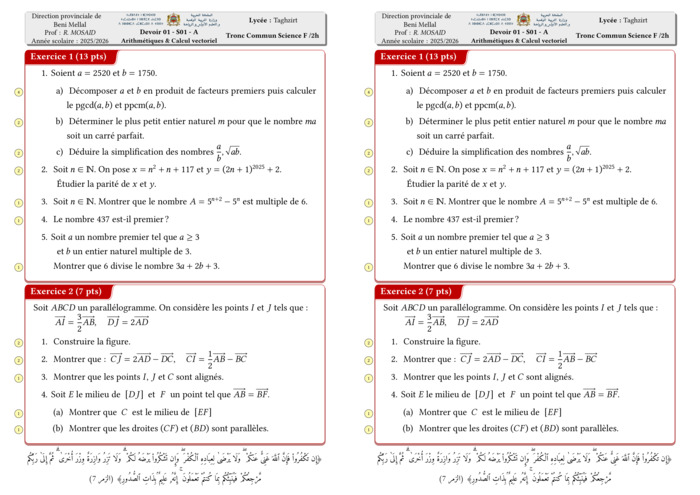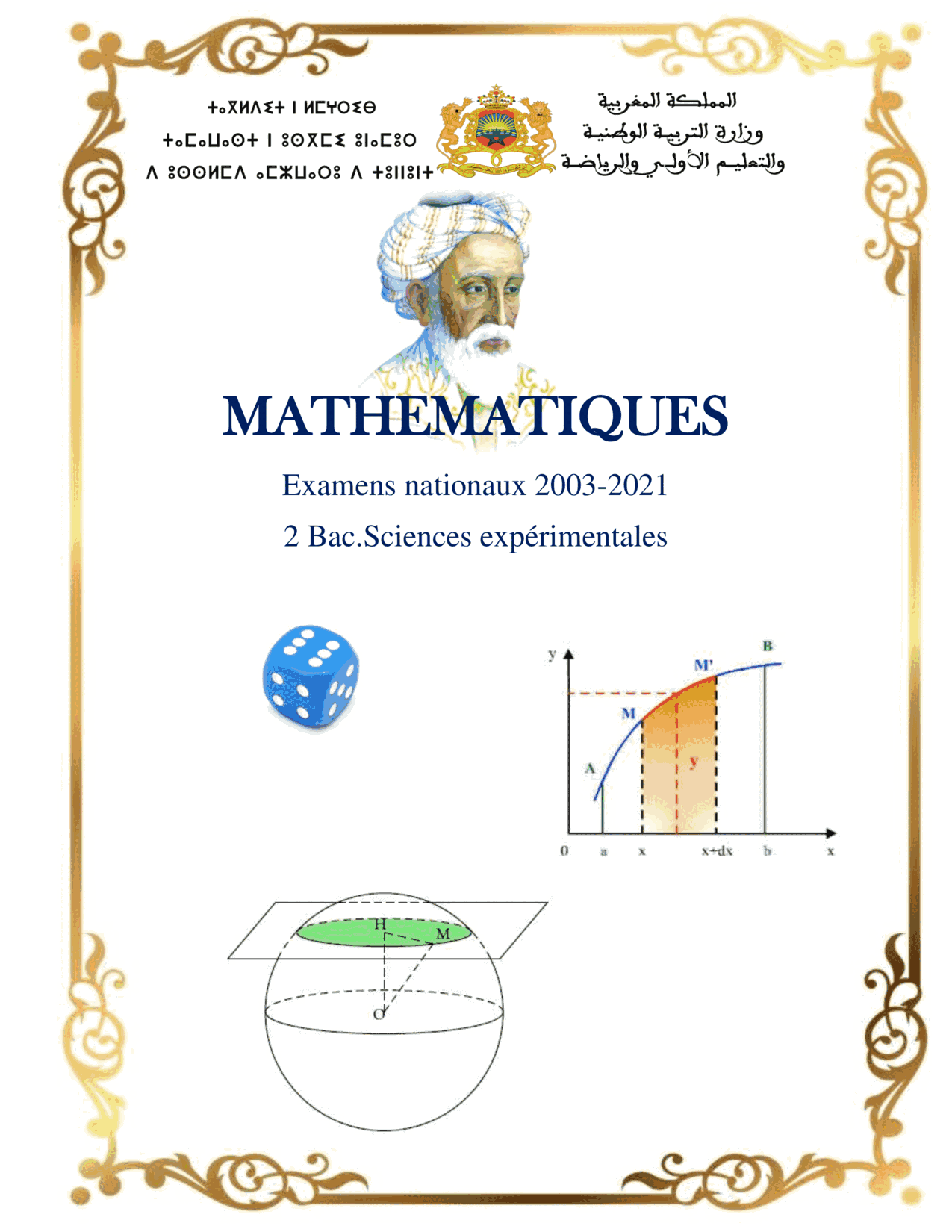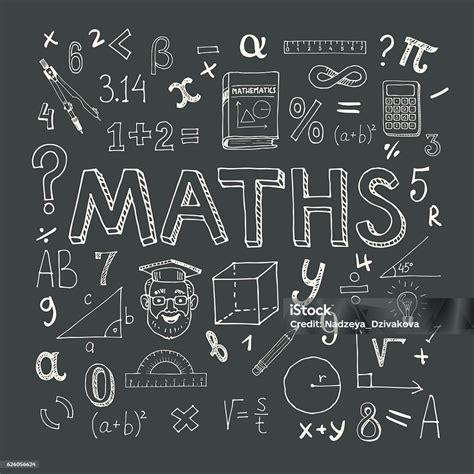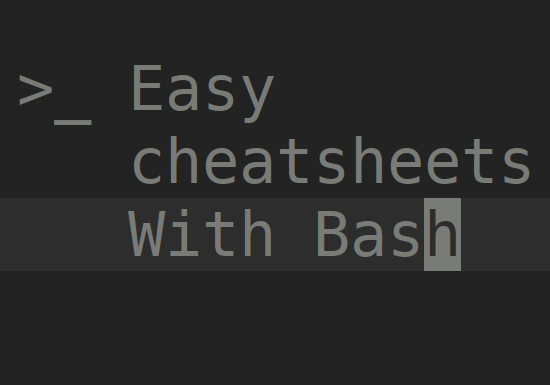Tous les sujets des suites numériques des examens nationaux 2008 - 2022
📅 April 26, 2023 | 👁️ Views: 1.78K
📚 Courses Covered in This Exam:
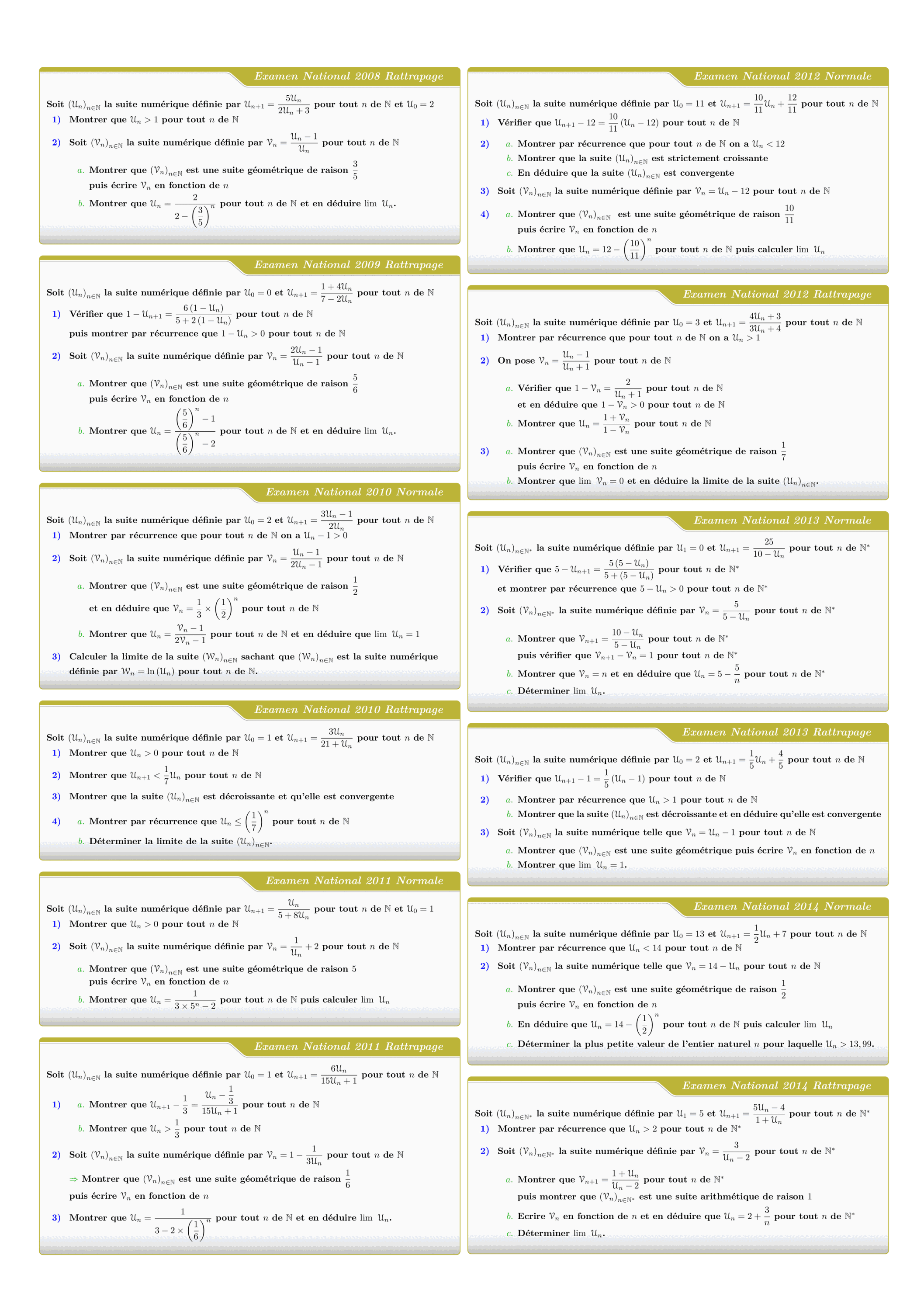
\documentclass[9pt]{article}
\usepackage[paperheight=20in,paperwidth=14.1in,margin=1in,left=1.3cm,right=1.3cm,top=1.5cm,bottom=1.5cm]{geometry}
\usepackage{exscale,array,mathrsfs,graphicx,amsfonts,amsmath,enumitem,tikz,lmodern,hyperref,wrapfig,setspace,tkz-tab,romanbar,fancyhdr,lipsum,tabularx,multirow,eucal}
\usepackage{multicol}
\newcommand*\mycirc[1]{%
\begin{tikzpicture}[baseline=(C.base)]
\node[draw,circle,inner sep=1pt,minimum size=3ex](C) {#1};
\end{tikzpicture}}
\definecolor{blue}{rgb}{0.0, 0.0, 1.0}
\definecolor{green}{rgb}{0.0, 0.7, 0.0}
\definecolor{aqua}{rgb}{0.0, 1.0, 1.0}
\usepackage[most]{tcolorbox}
\usepackage{varwidth}
\usetikzlibrary{calc}
%-----------
\pgfdeclarelayer{background}
\pgfdeclarelayer{foreground}
\pgfsetlayers{background,main,foreground}
%----------
\newcommand{\mybox}[6][\textwidth-\pgfkeysvalueof{/pgf/inner xsep}-4mm]{%
\begin{center}
\par\bigskip%
\begin{tikzpicture}
\node[rounded corners, text width=#1, align=justify, inner sep=8pt, outer sep=0] (one)
{\medskip\parbox[t]{\textwidth}{\vspace*{22pt}\par#6}};
\node[text=black,anchor=north east,align=center, minimum height=20pt, inner xsep=5pt] (two) at (one.north east) {#5 \hspace*{.5mm}};
\path[fill=#2,draw=#2]
($(one.north west)+(0ex,-4.5pt)$) [rounded corners=3pt] --
($(two.north west)+(-22pt,-4.5pt)$) --
($(two.south west)+(-4pt,0pt)$) [sharp corners] --
(two.south east) [rounded corners] --
(one.north east) --
(one.north west) [sharp corners] -- cycle;
\node[text=black,anchor=north west,align=center, minimum height=20pt, text height=2ex,inner sep=8pt, inner ysep=3pt] (three) at ($(one.north west)+(0,-3pt)$) {#4};
\node[text=white,anchor=north east,align=center, minimum height=20pt, inner sep=8pt,inner ysep=6.5pt] (for) at ($(one.north east)+(0,1.5pt)$) {#5\hspace*{0.8mm}};
\path[draw=#2,line width=0.8pt]
(one.south west) [rounded corners] --
(one.south east) [rounded corners] --
(one.north east) --
(one.north west) [rounded corners] -- cycle;
\foreach \x in {10,20,...,100}
\path[opacity=\x*0.01]
($(one.north west)+(0.4pt,-6.5pt+\x/100)$) [rounded corners=3pt,draw=gray!\x] --
($(two.north west)+(-23.3pt+\x/100,-6.5pt+\x/100)$) [rounded corners=3.5pt,draw=gray!\x] --
($(two.south west)+(-5.3pt+\x/100,-1.9pt+\x/100)$) --
($(two.south east)+(-0.4pt,-1.9pt+\x/100)$);
\path[draw=white,line width=1.1pt]
($(one.north west)+(0.4pt,-5.2pt)$) [rounded corners=3pt] --
($(two.north west)+(-22.3pt,-5.2pt)$) [rounded corners=3.5pt] --
($(two.south west)+(-4.3pt,-0.6pt)$) --
($(two.south east)+(-0.4pt,-0.6pt)$);
\begin{pgfonlayer}{background}
\path[fill=#3!5]
(one.south west) [rounded corners] --
(one.south east) [rounded corners] --
(one.north east) --
(one.north west) [rounded corners] -- cycle;
\path[opacity=0.5, top color=#3!5,bottom color=#3,middle color=#3!30]
(one.south west) [rounded corners] --
(one.south east) [sharp corners] --
($(one.south east)+(0ex,0.8cm)$) --
($(one.south west)+(0ex,0.8cm)$) [rounded corners] -- cycle;
\end{pgfonlayer}
\end{tikzpicture}
\end{center}
}
\begin{document}
\thispagestyle{empty}
\normalfont\bfseries
\noindent \begin{tabularx}{\textwidth}{XX}
\mybox[6.2in]{yellow!70!black}{gray}{}{\it \textcolor{black!1!white}{\textbf{{\large Examen National 2008 Rattrapage }} }} {Soit $\left ( \mathcal{U}_{n} \right )_{n \in \mathbb{N}}$ la suite numérique définie par $\displaystyle{\mathcal{U}_{n+1}= \frac{5\mathcal{U}_{n}}{2\mathcal{U}_{n}+3} }$ pour tout $n$ de $\mathbb{N}$ et $\mathcal{U}_{0}= 2$
\begin{enumerate}[label=\color{blue} \textbf{ \arabic*) } ]
\item Montrer que $\mathcal{U}_{n}>1$ pour tout $n$ de $\mathbb{N}$
\item Soit $\left ( \mathcal{V}_{n} \right )_{n \in \mathbb{N}}$ la suite numérique définie par $\displaystyle{\mathcal{V}_{n}= \frac{\mathcal{U}_{n}-1}{\mathcal{U}_{n}}}$ pour tout $n$ de $\mathbb{N}$
\begin{enumerate}[label=\textcolor{green}{ \textbf{$\alph*.$}}]
\item Montrer que $\left ( \mathcal{V}_{n} \right )_{n \in \mathbb{N}}$ est une suite géométrique de raison $\displaystyle{\frac{3}{5}}$
puis écrire $\mathcal{V}_{n}$ en fonction de $n$
\item Montrer que $\displaystyle{\mathcal{U}_{n}=\frac{2}{2-\displaystyle{\left(\frac{3}{5}\right)^{n}}}}$ pour tout $n$ de $\mathbb{N}$ et en déduire $\displaystyle{\lim\ \mathcal{U}_{n}}$.
\end{enumerate}
\end{enumerate}
}
\vspace{-0.3in}\mybox[6.2in]{yellow!70!black}{gray}{}{\it \textcolor{black!1!white}{\textbf{{\large Examen National 2009 Rattrapage }} }} {Soit $\left ( \mathcal{U}_{n} \right )_{n \in \mathbb{N}}$ la suite numérique définie par $\mathcal{U}_{0}= 0$ et $\displaystyle{\mathcal{U}_{n+1}=\frac{1+4\mathcal{U}_{n}}{7-2\mathcal{U}_{n}}}$ pour tout $n$ de $\mathbb{N}$
\begin{enumerate}[label=\color{blue} \textbf{ \arabic*) } ]
\item Vérifier que $\displaystyle{1-\mathcal{U}_{n+1}=\frac{6 \left( 1-\mathcal{U}_{n} \right)}{5+2\left( 1-\mathcal{U}_{n} \right)}}$ pour tout $n$ de $\mathbb{N}$
puis montrer par récurrence que $\displaystyle{1-\mathcal{U}_{n}>0}$ pour tout $n$ de $\mathbb{N}$
\item Soit $\left ( \mathcal{V}_{n} \right )_{n \in \mathbb{N}}$ la suite numérique définie par $\displaystyle{\mathcal{V}_{n}=\frac{2\mathcal{U}_{n} -1}{\mathcal{U}_{n} -1}}$ pour tout $n$ de $\mathbb{N}$
\begin{enumerate}[label=\textcolor{green}{ \textbf{$\alph*.$}}]
\item Montrer que $\left ( \mathcal{V}_{n} \right )_{n \in \mathbb{N}}$ est une suite géométrique de raison $\displaystyle{\frac{5}{6}}$
puis écrire $\displaystyle{\mathcal{V}_{n}}$ en fonction de $\displaystyle{n}$
\item Montrer que $\displaystyle{\mathcal{U}_{n}=\frac{\displaystyle{\left(\frac{5}{6}\right)^{n}}-1}{ \displaystyle{\left(\frac{5}{6}\right)^{n}}-2}}$ pour tout $n$ de $\mathbb{N}$ et en déduire $\lim \ \mathcal{U}_{n}$.
\end{enumerate}
\end{enumerate}
}
\vspace{-0.3in}\mybox[6.2in]{yellow!70!black}{gray}{}{\it \textcolor{black!1!white}{\textbf{{\large Examen National 2010 Normale }} }} { Soit $\left ( \mathcal{U}_{n} \right )_{n \in \mathbb{N}}$ la suite numérique définie par $\displaystyle{\mathcal{U}_{0}=2}$ et $\displaystyle{\mathcal{U}_{n+1}=\frac{3\mathcal{U}_{n}-1}{2\mathcal{U}_{n}}}$ pour tout $n$ de $\mathbb{N}$
\begin{enumerate}[label=\color{blue} \textbf{ \arabic*) } ]
\item Montrer par récurrence que pour tout $n$ de $\mathbb{N}$ on a $\displaystyle{ \mathcal{U}_{n}-1 > 0}$
\item Soit $\left ( \mathcal{V}_{n} \right )_{n \in \mathbb{N}}$ la suite numérique définie par $\displaystyle{\mathcal{V}_{n}=\frac{\mathcal{U}_{n} -1}{2\mathcal{U}_{n} -1}}$ pour tout $n$ de $\mathbb{N}$
\begin{enumerate}[label=\textcolor{green}{\textbf{$\alph*.$}}]
\item Montrer que $\left ( \mathcal{V}_{n} \right )_{n \in \mathbb{N}}$ est une suite géométrique de raison $\displaystyle{\frac{1}{2}}$
et en déduire que $\displaystyle{\mathcal{V}_{n}=\frac{1}{3} \times \left( \frac{1}{2} \right)^n}$ pour tout $n$ de $\mathbb{N}$
\item Montrer que $\displaystyle{\mathcal{U}_{n}=\frac{\mathcal{V}_{n}-1}{2\mathcal{V}_{n}-1}}$ pour tout $n$ de $\mathbb{N}$ et en déduire que $\lim \ \mathcal{U}_{n}=1$
\end{enumerate}
\item Calculer la limite de la suite $\left ( \mathcal{W}_{n} \right )_{n \in \mathbb{N}}$ sachant que $\left ( \mathcal{W}_{n} \right )_{n \in \mathbb{N}}$ est la suite numérique
définie par $\displaystyle{\mathcal{W}_{n}=\ln\left( \mathcal{U}_{n}\right)}$ pour tout $n$ de $\mathbb{N}$.
\end{enumerate}
}
\vspace{-0.3in}\mybox[6.2in]{yellow!70!black}{gray}{}{\it \textcolor{black!1!white}{\textbf{{\large Examen National 2010 Rattrapage }} }} { Soit $\left ( \mathcal{U}_{n} \right )_{n \in \mathbb{N}}$ la suite numérique définie par $\displaystyle{\mathcal{U}_{0}=1}$ et $\displaystyle{\mathcal{U}_{n+1}=\frac{3\mathcal{U}_{n}}{21+\mathcal{U}_{n}}}$ pour tout $n$ de $\mathbb{N}$
\begin{enumerate}[label=\color{blue} \textbf{ \arabic*) } ]
\item Montrer que $\mathcal{U}_{n}>0$ pour tout $n$ de $\mathbb{N}$
\item Montrer que $\displaystyle{\mathcal{U}_{n+1}<\frac{1}{7}\mathcal{U}_{n}}$ pour tout $n$ de $\mathbb{N}$
\item Montrer que la suite $\left ( \mathcal{U}_{n} \right )_{n \in \mathbb{N}}$ est décroissante et qu'elle est convergente
\item \begin{enumerate}[label=\textcolor{green}{\textbf{$\alph*.$}}]
\item Montrer par récurrence que $\displaystyle{\mathcal{U}_{n} \le \left(\frac{1}{7}\right)^n}$ pour tout $n$ de $\mathbb{N}$
\item Déterminer la limite de la suite $\left ( \mathcal{U}_{n} \right )_{n \in \mathbb{N}}$.
\end{enumerate}
\end{enumerate}
}
\vspace{-0.3in}\mybox[6.2in]{yellow!70!black}{gray}{}{\it \textcolor{black!1!white}{\textbf{{\large Examen National 2011 Normale }} }} {
Soit $\left ( \mathcal{U}_{n} \right )_{n \in \mathbb{N}}$ la suite numérique définie par $\displaystyle{\mathcal{U}_{n+1}= \frac{\mathcal{U}_{n}}{5+8\mathcal{U}_{n}} }$ pour tout $n$ de $\mathbb{N}$ et $\mathcal{U}_{0}= 1$
\begin{enumerate}[label=\color{blue} \textbf{ \arabic*) } ]
\item Montrer que $\mathcal{U}_{n}>0$ pour tout $n$ de $\mathbb{N}$
\item Soit $\left ( \mathcal{V}_{n} \right )_{n \in \mathbb{N}}$ la suite numérique définie par $\displaystyle{\mathcal{V}_{n}= \frac{1}{\mathcal{U}_{n}}+2}$ pour tout $n$ de $\mathbb{N}$
\begin{enumerate}[label=\textcolor{green}{ \textbf{$\alph*.$}}]
\item Montrer que $\left ( \mathcal{V}_{n} \right )_{n \in \mathbb{N}}$ est une suite géométrique de raison $5$
puis écrire $\mathcal{V}_{n}$ en fonction de $n$
\item Montrer que $\displaystyle{\mathcal{U}_{n}=\frac{1}{3\times 5^{n}-2}}$ pour tout $n$ de $\mathbb{N}$ puis calculer $\displaystyle{\lim\ \mathcal{U}_{n}}$
\end{enumerate}
\end{enumerate}
}
\vspace{-0.3in}\mybox[6.2in]{yellow!70!black}{gray}{}{\it \textcolor{black!1!white}{\textbf{{\large Examen National 2011 Rattrapage }} }} {Soit $\left ( \mathcal{U}_{n} \right )_{n \in \mathbb{N}}$ la suite numérique définie par $\mathcal{U}_{0}= 1$ et $\displaystyle{\mathcal{U}_{n+1}=\frac{6\mathcal{U}_{n}}{15\mathcal{U}_{n}+1}}$ pour tout $n$ de $\mathbb{N}$
\begin{enumerate}[label=\color{blue} \textbf{ \arabic*) } ]
\item \begin{enumerate}[label=\textcolor{green}{ \textbf{$\alph*.$}}]
\item Montrer que $\displaystyle{\mathcal{U}_{n+1}-\frac{1}{3}=\frac{\mathcal{U}_{n}-\displaystyle{\frac{1}{3}}}{15\mathcal{U}_{n}+1}}$ pour tout $n$ de $\mathbb{N}$
\item Montrer que $\displaystyle{ \mathcal{U}_{n}> \frac{1}{3}}$ pour tout $n$ de $\mathbb{N}$
\end{enumerate}
\item Soit $\left ( \mathcal{V}_{n} \right )_{n \in \mathbb{N}}$ la suite numérique définie par $\displaystyle{\mathcal{V}_{n}=1-\frac{1}{3 \mathcal{U}_{n}}}$ pour tout $n$ de $\mathbb{N}$
${\color{green} \Rightarrow }$ Montrer que $\left ( \mathcal{V}_{n} \right )_{n \in \mathbb{N}}$ est une suite géométrique de raison $\displaystyle{\frac{1}{6}}$
puis écrire $\displaystyle{\mathcal{V}_{n}}$ en fonction de $\displaystyle{n}$
\item Montrer que $\displaystyle{\mathcal{U}_{n}=\frac{1}{3-2\times \displaystyle{\left(\frac{1}{6}\right)^{n}}}}$ pour tout $n$ de $\mathbb{N}$ et en déduire $\lim \ \mathcal{U}_{n}$.
\end{enumerate}
}
& \mybox[6.2in]{yellow!70!black}{gray}{}{\it \textcolor{black!1!white}{\textbf{{\large Examen National 2012 Normale }} }} { Soit $\left ( \mathcal{U}_{n} \right )_{n \in \mathbb{N}}$ la suite numérique définie par $\displaystyle{\mathcal{U}_{0}=11}$ et $\displaystyle{\mathcal{U}_{n+1}=\frac{10}{11}\mathcal{U}_{n}+\frac{12}{11}}$ pour tout $n$ de $\mathbb{N}$
\begin{enumerate}[label=\color{blue} \textbf{ \arabic*) } ]
\item Vérifier que $\displaystyle{\mathcal{U}_{n+1}-12=\frac{10}{11} \left( \mathcal{U}_{n}-12\right)}$ pour tout $n$ de $\mathbb{N}$
\item
\begin{enumerate}[label=\textcolor{green}{\textbf{$\alph*.$}}]
\item Montrer par récurrence que pour tout $n$ de $\mathbb{N}$ on a $\displaystyle{ \mathcal{U}_{n} < 12}$
\item Montrer que la suite $\left ( \mathcal{U}_{n} \right )_{n \in \mathbb{N}}$ est strictement croissante
\item En déduire que la suite $\left ( \mathcal{U}_{n} \right )_{n \in \mathbb{N}}$ est convergente
\end{enumerate}
\item Soit $\left ( \mathcal{V}_{n} \right )_{n \in \mathbb{N}}$ la suite numérique définie par $\displaystyle{\mathcal{V}_{n}=\mathcal{U}_{n}-12}$ pour tout $n$ de $\mathbb{N}$
\item
\begin{enumerate}[label=\textcolor{green}{\textbf{$\alph*.$}}]
\item Montrer que $\displaystyle{\left ( \mathcal{V}_{n} \right )_{n \in \mathbb{N}}\ }$ est une suite géométrique de raison $\displaystyle{\frac{10}{11}}$
puis écrire $\displaystyle{\mathcal{V}_{n}}$ en fonction de $\displaystyle{n}$
\item Montrer que $\displaystyle{\mathcal{U}_{n}=12-\left(\frac{10}{11}\right)^n}$ pour tout $n$ de $\mathbb{N}$ puis calculer $\displaystyle{\lim \ \mathcal{U}_{n}}$
\end{enumerate}
\end{enumerate}
}
\vspace{-0.3in}\mybox[6.2in]{yellow!70!black}{gray}{}{\it \textcolor{black!1!white}{\textbf{{\large Examen National 2012 Rattrapage }} }} { Soit $\left ( \mathcal{U}_{n} \right )_{n \in \mathbb{N}}$ la suite numérique définie par $\displaystyle{\mathcal{U}_{0}=3}$ et $\displaystyle{\mathcal{U}_{n+1}=\frac{4\mathcal{U}_{n}+3}{3\mathcal{U}_{n}+4}}$ pour tout $n$ de $\mathbb{N}$
\begin{enumerate}[label=\color{blue} \textbf{ \arabic*) } ]
\item Montrer par récurrence que pour tout $n$ de $\mathbb{N}$ on a $\mathcal{U}_{n}>1$
\item On pose $\displaystyle{\mathcal{V}_{n}=\frac{\mathcal{U}_{n}-1}{\mathcal{U}_{n}+1}}$ pour tout $n$ de $\mathbb{N}$
\begin{enumerate}[label=\textcolor{green}{\textbf{$\alph*.$}}]
\item Vérifier que $\displaystyle{1-\mathcal{V}_{n}=\frac{2}{\mathcal{U}_{n}+1}}$ pour tout $n$ de $\mathbb{N}$
et en déduire que $\displaystyle{1-\mathcal{V}_{n}>0}$ pour tout $n$ de $\mathbb{N}$
\item Montrer que $\displaystyle{\mathcal{U}_{n}=\frac{1+\mathcal{V}_{n}}{1-\mathcal{V}_{n}}}$ pour tout $n$ de $\mathbb{N}$
\end{enumerate}
\item \begin{enumerate}[label=\textcolor{green}{\textbf{$\alph*.$}}]
\item Montrer que $\displaystyle{\left ( \mathcal{V}_{n} \right )_{n \in \mathbb{N}}}$ est une suite géométrique de raison $\displaystyle{\frac{1}{7}}$
puis écrire $\displaystyle{\mathcal{V}_{n}}$ en fonction de $\displaystyle{n}$
\item Montrer que $\displaystyle{\lim \ \mathcal{V}_{n}=0}$ et en déduire la limite de la suite $\left ( \mathcal{U}_{n} \right )_{n \in \mathbb{N}}$.
\end{enumerate}
\end{enumerate}
}
\vspace{-0.3in}\mybox[6.2in]{yellow!70!black}{gray}{}{\it \textcolor{black!1!white}{\textbf{{\large Examen National 2013 Normale } }}} { Soit $\left ( \mathcal{U}_{n} \right )_{n \in \mathbb{N}^{*}}$ la suite numérique définie par $\displaystyle{\mathcal{U}_{1}=0}$ et $\displaystyle{\mathcal{U}_{n+1}=\frac{25}{10-\mathcal{U}_{n}}}$ pour tout $n$ de $\mathbb{N}^{*}$
\begin{enumerate}[label=\color{blue} \textbf{ \arabic*) } ]
\item Vérifier que $\displaystyle{5-\mathcal{U}_{n+1}=\frac{5\left(5-\mathcal{U}_{n}\right)}{5+\left(5-\mathcal{U}_{n}\right)}}$ pour tout $n$ de $\mathbb{N}^{*}$
et montrer par récurrence que $\displaystyle{5-\mathcal{U}_{n} >0}$ pour tout $n$ de $\mathbb{N}^{*}$
\item Soit $\left ( \mathcal{V}_{n} \right )_{n \in \mathbb{N}^{*}}$ la suite numérique définie par $\displaystyle{\mathcal{V}_{n}=\frac{5}{5-\mathcal{U}_{n}}}$ pour tout $n$ de $\mathbb{N}^{*}$
\begin{enumerate}[label=\textcolor{green}{\textbf{$\alph*.$}}]
\item Montrer que $\displaystyle{\mathcal{V}_{n+1}=\frac{10-\mathcal{U}_{n}}{5-\mathcal{U}_{n}}}$ pour tout $n$ de $\mathbb{N}^{*}$
puis vérifier que $\displaystyle{\mathcal{V}_{n+1}-\mathcal{V}_{n}=1}$ pour tout $n$ de $\mathbb{N}^{*}$
\item Montrer que $\displaystyle{\mathcal{V}_{n}=n}$ et en déduire que $\displaystyle{\mathcal{U}_{n}=5-\frac{5}{n}}$ pour tout $n$ de $\mathbb{N}^{*}$
\item Déterminer $\displaystyle{\lim \ \mathcal{U}_{n}}$.
\end{enumerate}
\end{enumerate}
}
\vspace{-0.3in}\mybox[6.2in]{yellow!70!black}{gray}{}{\it \textcolor{black!1!white}{\textbf{{\large Examen National 2013 Rattrapage } }}} { Soit $\left ( \mathcal{U}_{n} \right )_{n \in \mathbb{N}}$ la suite numérique définie par $\displaystyle{\mathcal{U}_{0}=2}$ et $\displaystyle{\mathcal{U}_{n+1}=\frac{1}{5}\mathcal{U}_{n}+\frac{4}{5}}$ pour tout $n$ de $\mathbb{N}$
\begin{enumerate}[label=\color{blue} \textbf{ \arabic*) } ]
\item Vérifier que $\displaystyle{\mathcal{U}_{n+1}-1=\frac{1}{5}\left ( \mathcal{U}_{n}-1\right )}$ pour tout $n$ de $\mathbb{N}$
\item \begin{enumerate}[label=\textcolor{green}{\textbf{$\alph*.$}}]
\item Montrer par récurrence que $\mathcal{U}_{n}> 1$ pour tout $n$ de $\mathbb{N}$
\item Montrer que la suite $\left ( \mathcal{U}_{n} \right )_{n \in \mathbb{N}}$ est décroissante et en déduire qu'elle est convergente
\end{enumerate}
\item Soit $\displaystyle{\left ( \mathcal{V}_{n} \right )_{n \in \mathbb{N}}}$ la suite numérique telle que $\displaystyle{\mathcal{V}_{n}=\mathcal{U}_{n}-1}$ pour tout $n$ de $\mathbb{N}$
\begin{enumerate}[label=\textcolor{green}{\textbf{$\alph*.$}}]
\item Montrer que $\displaystyle{\left ( \mathcal{V}_{n} \right )_{n \in \mathbb{N}}}$ est une suite géométrique puis écrire $\displaystyle{\mathcal{V}_{n}}$ en fonction de $n$
\item Montrer que $\displaystyle{\lim \ \mathcal{U}_{n}=1}$.
\end{enumerate}
\end{enumerate}
}\vspace{-0.3in}\mybox[6.2in]{yellow!70!black}{gray}{}{\it \textcolor{black!1!white}{\textbf{{\large Examen National 2014 Normale } }}} { Soit $\left ( \mathcal{U}_{n} \right )_{n \in \mathbb{N}}$ la suite numérique définie par $\displaystyle{\mathcal{U}_{0}=13}$ et $\displaystyle{\mathcal{U}_{n+1}=\frac{1}{2}\mathcal{U}_{n}+7}$ pour tout $n$ de $\mathbb{N}$
\begin{enumerate}[label=\color{blue} \textbf{ \arabic*) } ]
\item Montrer par récurrence que $\mathcal{U}_{n} < 14$ pour tout $n$ de $\mathbb{N}$
\item Soit $\displaystyle{\left ( \mathcal{V}_{n} \right )_{n \in \mathbb{N}}}$ la suite numérique telle que $\displaystyle{\mathcal{V}_{n}=14-\mathcal{U}_{n}}$ pour tout $n$ de $\mathbb{N}$
\begin{enumerate}[label=\textcolor{green}{\textbf{$\alph*.$}}]
\item Montrer que $\displaystyle{\left ( \mathcal{V}_{n} \right )_{n \in \mathbb{N}}}$ est une suite géométrique de raison $\displaystyle{\frac{1}{2}}$
puis écrire $\displaystyle{\mathcal{V}_{n}}$ en fonction de $n$
\item En déduire que $\displaystyle{\mathcal{U}_{n}=14-\left (\frac{1}{2}\right )^n}$ pour tout $n$ de $\mathbb{N}$ puis calculer $\displaystyle{\lim \ \mathcal{U}_{n}}$
\item Déterminer la plus petite valeur de l'entier naturel $n$ pour laquelle $\displaystyle{\mathcal{U}_{n}> 13,99}$.
\end{enumerate}
\end{enumerate}
}
\vspace{-0.3in}\mybox[6.2in]{yellow!70!black}{gray}{}{\it \textcolor{black!1!white}{\textbf{{\large Examen National 2014 Rattrapage } }}} { Soit $\left ( \mathcal{U}_{n} \right )_{n \in \mathbb{N}^{*}}$ la suite numérique définie par $\displaystyle{\mathcal{U}_{1}=5}$ et $\displaystyle{\mathcal{U}_{n+1}=\frac{5\mathcal{U}_{n}-4}{1+\mathcal{U}_{n}}}$ pour tout $n$ de $\mathbb{N}^{*}$
\begin{enumerate}[label=\color{blue} \textbf{ \arabic*) } ]
\item Montrer par récurrence que $\displaystyle{\mathcal{U}_{n} >2}$ pour tout $n$ de $\mathbb{N}^{*}$
\item Soit $\left ( \mathcal{V}_{n} \right )_{n \in \mathbb{N}^{*}}$ la suite numérique définie par $\displaystyle{\mathcal{V}_{n}=\frac{3}{\mathcal{U}_{n}-2}}$ pour tout $n$ de $\mathbb{N}^{*}$
\begin{enumerate}[label=\textcolor{green}{\textbf{$\alph*.$}}]
\item Montrer que $\displaystyle{\mathcal{V}_{n+1}=\frac{1+\mathcal{U}_{n}}{\mathcal{U}_{n}-2}}$ pour tout $n$ de $\mathbb{N}^{*}$
puis montrer que $\displaystyle{\left ( \mathcal{V}_{n} \right )_{n \in \mathbb{N}^{*}}}$ est une suite arithmétique de raison $1$
\item Ecrire $\displaystyle{\mathcal{V}_{n}}$ en fonction de $n$ et en déduire que $\displaystyle{\mathcal{U}_{n}=2+\frac{3}{n}}$ pour tout $n$ de $\mathbb{N}^{*}$
\item Déterminer $\displaystyle{\lim \ \mathcal{U}_{n}}$.
\end{enumerate}
\end{enumerate}
}
\end{tabularx}
\clearpage
\thispagestyle{empty}
\noindent \begin{tabularx}{\textwidth}{XX}
\mybox[6.2in]{yellow!70!black}{gray}{}{\it \textcolor{black!1!white}{\textbf{{\large Examen National 2015 Normale } }}} {Soit $\left ( \mathcal{U}_{n} \right )_{n \in \mathbb{N}}$ la suite numérique définie par $\displaystyle{\mathcal{U}_{0}=4}$ et $\displaystyle{\mathcal{U}_{n+1}=\frac{2}{5}\mathcal{U}_{n}+3}$ pour tout $n$ de $\mathbb{N}$
\begin{enumerate}[label=\color{blue} \textbf{ \arabic*) } ]
\item Montrer par récurrence que $\mathcal{U}_{n}< 5$ pour tout $n$ de $\mathbb{N}$
\item Vérifier que $\displaystyle{\mathcal{U}_{n+1}-\mathcal{U}_{n}=\frac{3}{5} \left(5-\mathcal{U}_{n}\right)}$ pour tout $n$ de $\mathbb{N}$
puis en déduire que $\displaystyle{\left ( \mathcal{U}_{n} \right )_{n \in \mathbb{N}}}$ est une suite croissante
\item En déduire que la suite $\displaystyle{\left ( \mathcal{U}_{n} \right )_{n \in \mathbb{N}}}$ est convergente
\item Soit $\displaystyle{\left ( \mathcal{V}_{n} \right )_{n \in \mathbb{N}}}$ la suite numérique telle que $\displaystyle{\mathcal{V}_{n}=5-\mathcal{U}_{n}}$ pour tout $n$ de $\mathbb{N}$
\begin{enumerate}[label=\textcolor{green}{\textbf{$\alph*.$}}]
\item Montrer que $\displaystyle{\left ( \mathcal{V}_{n} \right )_{n \in \mathbb{N}}}$ est une suite géométrique de raison $\displaystyle{\frac{2}{5}}$
puis écrire $\displaystyle{\mathcal{V}_{n}}$ en fonction de $n$
\item Montrer que $\displaystyle{\mathcal{U}_{n}=5-\left( \frac{2}{5} \right)^n}$ pour tout $n$ de $\mathbb{N}$ et calculer $\displaystyle{\lim \ \mathcal{U}_{n}}$.
\end{enumerate}
\end{enumerate}
}
\vspace{-0.3in}\mybox[6.2in]{yellow!70!black}{gray}{}{\it \textcolor{black!1!white}{\textbf{{\large Examen National 2016 Normale }} }} {Soit $\left ( \mathcal{U}_{n} \right )_{n \in \mathbb{N}}$ la suite numérique définie par $\displaystyle{\mathcal{U}_{0}=2}$ et $\displaystyle{\mathcal{U}_{n+1}=\frac{3+\mathcal{U}_{n}}{5-\mathcal{U}_{n}}}$ pour tout $n$ de $\mathbb{N}$
\begin{enumerate}[label=\color{blue} \textbf{ \arabic*) } ]
\item Vérifier que $\displaystyle{\mathcal{U}_{n+1}-3=\frac{4(\mathcal{U}_{n}-3)}{2+(3-\mathcal{U}_{n})}}$ pour tout $n$ de $\mathbb{N}$
puis montrer par récurrence que $\mathcal{U}_{n}< 3$ pour tout $n$ de $\mathbb{N}$
\item Soit $\displaystyle{\left ( \mathcal{V}_{n} \right )_{n \in \mathbb{N}}}$ la suite numérique définie par $\displaystyle{\mathcal{V}_{n}=\frac{\mathcal{U}_{n}-1}{3-\mathcal{U}_{n}}}$ pour tout $n$ de $\mathbb{N}$
\begin{enumerate}[label=\textcolor{green}{\textbf{$\alph*.$}}]
\item Montrer que $\displaystyle{\left ( \mathcal{V}_{n} \right )_{n \in \mathbb{N}}}$ est une suite géométrique de raison $\displaystyle{\frac{1}{2}} $
puis en déduire que $\displaystyle{\mathcal{V}_{n}=\left ( \frac{1}{2} \right )^{n}}$ pour tout $n$ de $\mathbb{N}$
\item Montrer que $\displaystyle{\mathcal{U}_{n}=\frac{1+3\mathcal{V}_{n}}{1+\mathcal{V}_{n}}}$ pour tout $n$ de $\mathbb{N}$ puis écrire $\displaystyle{\mathcal{U}_{n}}$ en fonction de $n$
\item Déterminer la limite de la suite $\left ( \mathcal{U}_{n} \right )_{n \in \mathbb{N}}$.
\end{enumerate}
\end{enumerate}
}
\vspace{-0.3in}\mybox[6.2in]{yellow!70!black}{gray}{}{\it \textcolor{black!1!white}{\textbf{{\large Examen National 2016 Rattrapage }} }} {Soit $\left ( \mathcal{U}_{n} \right )_{n \in \mathbb{N}}$ la suite numérique définie par $\mathcal{U}_{0}=2$ et $\displaystyle{\mathcal{U}_{n+1}=\frac{1}{16} \mathcal{U}_{n}+\frac{15}{16}}$ pour tout $n$ de $\mathbb{N}$
\begin{enumerate}[label=\color{blue} \textbf{ \arabic*) } ]
\item
\begin{enumerate}[label=\textcolor{green}{\textbf{$\alph*.$}}]
\item Montrer par récurrence que $\displaystyle{\mathcal{U}_{n}> 1}$ pour tout $n$ de $\mathbb{N}$
\item Vérifier que $\displaystyle{\mathcal{U}_{n+1}-\mathcal{U}_{n}=-\frac{15}{16}(\mathcal{U}_{n}-1)}$ pour tout $n$ de $\mathbb{N}$
puis montrer que la suite $\left ( \mathcal{U}_{n} \right )_{n \in \mathbb{N}}$ est décroissante
\item En déduire que la suite $\left ( \mathcal{U}_{n} \right )_{n \in \mathbb{N}}$ est convergente
\end{enumerate}
\item Soit $\displaystyle{\left ( \mathcal{V}_{n} \right )_{n \in \mathbb{N}}}$ la suite numérique telle que $\displaystyle{\mathcal{V}_{n}=\mathcal{U}_{n}-1}$ pour tout $n$ de $\mathbb{N}$
\begin{enumerate}[label=\textcolor{green}{\textbf{$\alph*.$}}]
\item Montrer que $\displaystyle{\left ( \mathcal{V}_{n} \right )_{n \in \mathbb{N}}}$ est une suite géométrique de raison $\displaystyle{\frac{1}{16}}$
puis écrire $\displaystyle{\mathcal{V}_{n}}$ en fonction de $n$
\item Montrer que $\displaystyle{\mathcal{U}_{n}=1+\left ( \frac{1}{16} \right )^{n}}$ pour tout $n$ de $\mathbb{N}$ puis déterminer $\displaystyle{\lim \ \mathcal{U}_{n}}$.
\end{enumerate}
\end{enumerate}
}\vspace{-0.3in}\mybox[6.2in]{yellow!70!black}{gray}{}{\it \textcolor{black!1!white}{\textbf{{\large Examen National 2017 Rattrapage }} }} { Soit $\displaystyle{\left ( \mathcal{U}_{n} \right )_{n \in \mathbb{N}}}$ la suite numérique définie par
$\ \displaystyle{\mathcal{U}_{0}=17}$ et $\displaystyle{\mathcal{U}_{n+1}=\frac{1}{4}\mathcal{U}_{n}+12}$ pour tout $n$ de $\mathbb{N}$
\begin{enumerate}[label=\color{blue} \textbf{ \arabic*) } ]
\item \begin{enumerate}[label=\textcolor{green}{ \textbf{$\alph*.$}}]
\item Montrer par récurrence que $\displaystyle{\mathcal{U}_{n}> 16}$ pour tout $n$ de $\mathbb{N}$
\item Montrer que la suite $\left ( \mathcal{U}_{n} \right )_{n \in \mathbb{N}}$ est décroissante et en déduire qu'elle est convergente
\end{enumerate}
\item Soit $\displaystyle{\left ( \mathcal{V}_{n} \right )_{n \in \mathbb{N}}}$ la suite numérique telle que $\displaystyle{\mathcal{V}_{n}=\mathcal{U}_{n}-16}$ pour tout $n$ de $\mathbb{N}$
\begin{enumerate}[label=\textcolor{green}{ \textbf{$\alph*.$}}]
\item Montrer que $\displaystyle{\left ( \mathcal{V}_{n} \right )_{n \in \mathbb{N}}}$ est une suite géométrique
\item En déduire que $\displaystyle{\mathcal{U}_{n}=16+\left ( \frac{1}{4} \right )^{n}}$ pour tout $n$ de $\mathbb{N}$ puis déterminer $\displaystyle{\lim \ \mathcal{U}_{n}}$
\item Déterminer la plus petite valeur de l'entier naturel $n$ pour laquelle $\displaystyle{\mathcal{U}_{n}< 16,0001}$.
\end{enumerate}
\end{enumerate}
}
\vspace{-0.3in}\mybox[6.2in]{yellow!70!black}{gray}{}{\it \textcolor{black!1!white}{\textbf{{\large Examen National 2020 Normale }} }} {
Soit $\displaystyle{\left ( \mathcal{U}_{n} \right )_{n \in \mathbb{N}}}$ la suite numérique définie par $\displaystyle{\mathcal{U}_{0}=\frac{3}{2}}$ et $\displaystyle{\mathcal{U}_{n+1}=\frac{2\mathcal{U}_{n}}{2\mathcal{U}_{n}+5}}$ pour tout $n$ de $\mathbb{N}$
\begin{enumerate}[label=\color{blue} \textbf{ \arabic*) } ]
\item Calculer $\mathcal{U}_{1}$
\item Montrer par récurrence que pour tout $n$ de $\mathbb{N}$ on a $\mathcal{U}_{n}> 0$
\item
\begin{enumerate}[label=\textcolor{green}{ \textbf{$\alph*.$}}]
\item Montrer que $\displaystyle{0< \mathcal{U}_{n+1}\leq \frac{2}{5}\mathcal{U}_{n}}$ pour tout $n$ de $\mathbb{N}$
puis en déduire que $\displaystyle{0< \mathcal{U}_{n}\leq \frac{3}{2}\left ( \frac{2}{5} \right )^{n}}$ pour tout $n$ de $\mathbb{N}$
\item Calculer $\lim \ \mathcal{U}_{n}$
\end{enumerate}
\item On considère la suite numérique $\displaystyle{\left ( \mathcal{V}_{n} \right )_{n \in \mathbb{N}}}$ définie par $\displaystyle{\mathcal{V}_{n}=\frac{4\mathcal{U}_{n}}{2\mathcal{U}_{n}+3}}$ pour tout $n$ de $\mathbb{N}$
\begin{enumerate}[label=\textcolor{green}{ \textbf{$\alph*.$}}]
\item Montrer que $\displaystyle{\left ( \mathcal{V}_{n} \right )_{n \in \mathbb{N}}}$ est une suite géométrique de raison $\displaystyle{\frac{2}{5}}$
\item Ecrire $\mathcal{V}_{n}$ en fonction de $n$ et en déduire $\mathcal{U}_{n}$ en fonction de $n$ pour tout $n$ de $\mathbb{N}$.
\end{enumerate}
\end{enumerate}
}
& \mybox[6.2in]{yellow!70!black}{gray}{}{\it \textcolor{black!1!white}{\textbf{{\large Examen National 2020 Rattrapage }} }} {
Soit $\displaystyle{\left ( \mathcal{U}_{n} \right )_{n \in \mathbb{N}}}$ la suite numérique définie par $\mathcal{U}_{0}=1$ et $\displaystyle{\mathcal{U}_{n+1}=\frac{3\mathcal{U}_{n}-8}{2\mathcal{U}_{n}-5}}$ pour tout $n$ de $\mathbb{N}$
\begin{enumerate}[label=\color{blue} \textbf{ \arabic*) } ]
\item Montrer que pour tout $n$ de $\mathbb{N}$ $\mathcal{U}_{n}< 2$
\item On pose $\displaystyle{\mathcal{V}_{n}=\frac{\mathcal{U}_{n}-3}{\mathcal{U}_{n}-2}}$ pour tout $n$ de $\mathbb{N}$
\begin{enumerate}[label=\textcolor{green}{ \textbf{$\alph*.$}}]
\item Montrer que $\displaystyle{\left ( \mathcal{V}_{n} \right )_{n \in \mathbb{N}}}$ est une suite arithmétique de raison $2$
\item Ecrire $\mathcal{V}_{n}$ en fonction de $n$ et en déduire $\mathcal{U}_{n}$ en fonction de $n$ pour tout $n$ de $\mathbb{N}$
\item Calculer la limite de la suite $\displaystyle{\left ( \mathcal{U}_{n} \right )_{n \in \mathbb{N}}}$.
\end{enumerate}
\end{enumerate}
}
\vspace{-0.3in}\mybox[6.2in]{yellow!70!black}{gray}{}{\it \textcolor{black!1!white}{\textbf{{\large Examen National 2021 Normale }} }} { Soit $\displaystyle{\left ( \mathcal{U}_{n} \right )_{n \in \mathbb{N}}}$ la suite numérique définie par $\displaystyle{\mathcal{U}_{0}=\frac{1}{2}}$ et $\displaystyle{\mathcal{U}_{n+1}=\frac{\mathcal{U}_{n}}{3-2\mathcal{U}_{n}}}$ pour tout $n$ de $\mathbb{N}$
\begin{enumerate}[label=\color{blue} \textbf{ \arabic*) } ]
\item Calculer $\mathcal{U}_{1}$
\item Montrer par récurrence que pour tout $n$ de $\mathbb{N}$ $\displaystyle{0< \mathcal{U}_{n}\leq \frac{1}{2}}$
\item
\begin{enumerate}[label=\textcolor{green}{\textbf{$\alph*.$}}]
\item Montrer que pour $n$ de $\mathbb{N}$ on a $\displaystyle{\frac{\mathcal{U}_{n+1}}{\mathcal{U}_{n}} \leq \frac{1}{2}}$
\item En déduire la monotonie de la suite $\displaystyle{\left ( \mathcal{U}_{n} \right )_{n \in \mathbb{N}}}$
\end{enumerate}
\item
\begin{enumerate}[label=\textcolor{green}{\textbf{$\alph*.$}}]
\item Montrer que pour tout $n$ de $\mathbb{N}$ $\displaystyle{0< \mathcal{U}_{n} \leq \left ( \frac{1}{2} \right )^{n+1}}$ puis calculer $\lim \ \mathcal{U}_{n}$
\item On pose $\displaystyle{\mathcal{V}_{n}=\ln (3-2\mathcal{U}_{n})}$ pour tout $n$ de $\mathbb{N}$ calculer $\lim \mathcal{V}_{n}$
\end{enumerate}
\item
\begin{enumerate}[label=\textcolor{green}{\textbf{$\alph*.$}}]
\item Vérifier que pour tout $n$ de $\mathbb{N}$ $\displaystyle{\frac{1}{\mathcal{U}_{n+1}}-1=3\left ( \frac{1}{\mathcal{U}_{n}}-1 \right )}$
\item En déduire $\mathcal{U}_{n}$ en fonction de $n$ pour tout $n$ de $\mathbb{N}$.
\end{enumerate}
\end{enumerate}
}
\vspace{-0.3in}\mybox[6.2in]{yellow!70!black}{gray}{}{\it \textcolor{black!1!white}{\textbf{{\large Examen National 2021 Rattrapage }} }} { On considère la suite $\displaystyle{\left ( \mathcal{U}_{n} \right )_{n \in \mathbb{N}}}$ définie par $\displaystyle{\mathcal{U}_{0}=\frac{1}{3}}$ et $\displaystyle{\mathcal{U}_{n+1}=\frac{1+\mathcal{U}_{n}}{3-\mathcal{U}_{n}}}$ pour tout $n$ de $\mathbb{N}$
\begin{enumerate}[label=\color{blue} \textbf{ \arabic*) } ]
\item Montrer que pour tout $n$ de $\mathbb{N}$ on a $0< \mathcal{U}_{n}<1$
\item
\begin{enumerate}[label=\textcolor{green}{\textbf{$\alph*.$}}]
\item Montrer que pour tout $n$ de $\mathbb{N}$ on a $\displaystyle{\mathcal{U}_{n+1}-\mathcal{U}_{n}=\frac{(\mathcal{U}_{n}-1)^{2}}{3-\mathcal{U}_{n}}}$
\item Montrer que la suite $\displaystyle{\left ( \mathcal{U}_{n} \right )_{n \in \mathbb{N}}}$ est convergente
\end{enumerate}
\item On pose $\displaystyle{\mathcal{V}_{n}=\frac{1}{1-\mathcal{U}_{n}}}$ pour tout $n$ de $\mathbb{N}$
\begin{enumerate}[label=\textcolor{green}{\textbf{$\alph*.$}}]
\item Montrer que $\displaystyle{\left ( \mathcal{V}_{n} \right )_{n \in \mathbb{N}}}$ est une suite arithmétique en déterminant sa raison et
son premier terme
\item Déterminer $\mathcal{V}_{n}$ en fonction de $n$ et en déduire que $\displaystyle{\mathcal{U}_{n}=\frac{n+1}{n+3}}$ pour tout $n$ de $\mathbb{N}$
\item Calculer la limite de la suite $\displaystyle{\left ( \mathcal{U}_{n} \right )_{n \in \mathbb{N}}}$
\end{enumerate}
\item Quelle est la valeur du nombre $n$ pour laquelle on a $\displaystyle{\mathcal{U}_{n}\geq \frac{1011}{1012}}$?
\end{enumerate}
}
\vspace{-0.3in}\mybox[6.2in]{yellow!70!black}{gray}{}{\it \textcolor{black!1!white}{\textbf{{\large Examen National 2022 Rattrapage }} }} { Soit $\displaystyle{\left ( \mathcal{U}_{n} \right )_{n \in \mathbb{N}}}$ la suite numérique définie par $\displaystyle{\mathcal{U}_{0}=2}$ et $\displaystyle{\mathcal{U}_{n+1}=\frac{\sqrt{2}}{2}\mathcal{U}_{n}+\frac{2-\sqrt{2}}{2}}$ pour tout $n \in \mathbb{N}$
\begin{enumerate}[label=\color{blue} \textbf{ \arabic*) } ]
\item \begin{enumerate}[label=\textcolor{green}{\textbf{$\alph*.$}}]
\item Montrer que pour tout $n$ de $\mathbb{N}$ on a $\displaystyle{ \mathcal{U}_{n} > 1}$
\item Montrer que pour tout $n$ de $\mathbb{N}$ on a $\displaystyle{ \mathcal{U}_{n+1}-\mathcal{U}_{n}=\frac{\sqrt{2}-2}{2} \left( \mathcal{U}_{n}-1 \right)}$ et déduire que la suite $\displaystyle{\left ( \mathcal{U}_{n} \right )_{n \in \mathbb{N}}}$ est décroissante et convergente
\end{enumerate}
\item On pose $\displaystyle{\mathcal{V}_{n}=\mathcal{U}_{n}-1}$ pour tout $n$ de $\mathbb{N}$
\begin{enumerate}[label=\textcolor{green}{\textbf{$\alph*.$}}]
\item Montrer que $\displaystyle{\left ( \mathcal{V}_{n} \right )_{n \in \mathbb{N}}}$ est une suite géométrique et déterminer sa raison et son premier terme.
\item Ecrire $\displaystyle{ \mathcal{U}_{n}}$ en fonction de $n$ puis déduire la limite de la suite $\displaystyle{\left ( \mathcal{U}_{n} \right )_{n \in \mathbb{N}}}$
\item Calculer la somme $\mathcal{S}=\mathcal{U}_{0}+\mathcal{U}_{1}+\mathcal{U}_{2}+....+\mathcal{U}_{2021}$
\end{enumerate}
\end{enumerate}
}
\end{tabularx}
\end{document}Related Courses, Exams, and Exercises
Exam PDF:
📥 Download Tous les sujets des suites numériques des examens nationaux 2008 - 2022 (PDF)
if you find this content helpful, Please consider supporting me with a small donation
إن وجدت هذا المحتوى مفيدا، من فضلك إدعمني بمبلغ بسيط كتبرع
Buy me a coffee — إشتر لي قهوة
PayPal.me • عبر بايبالOr bank transfer • أو حوالة بنكية
Titulaire : RADOUAN MOSAID RIB : 230 090 6501953211022000 65 IBAN : MA64 2300 9065 0195 3211 0220 0065 BIC / SWIFT : CIHMMAMC
